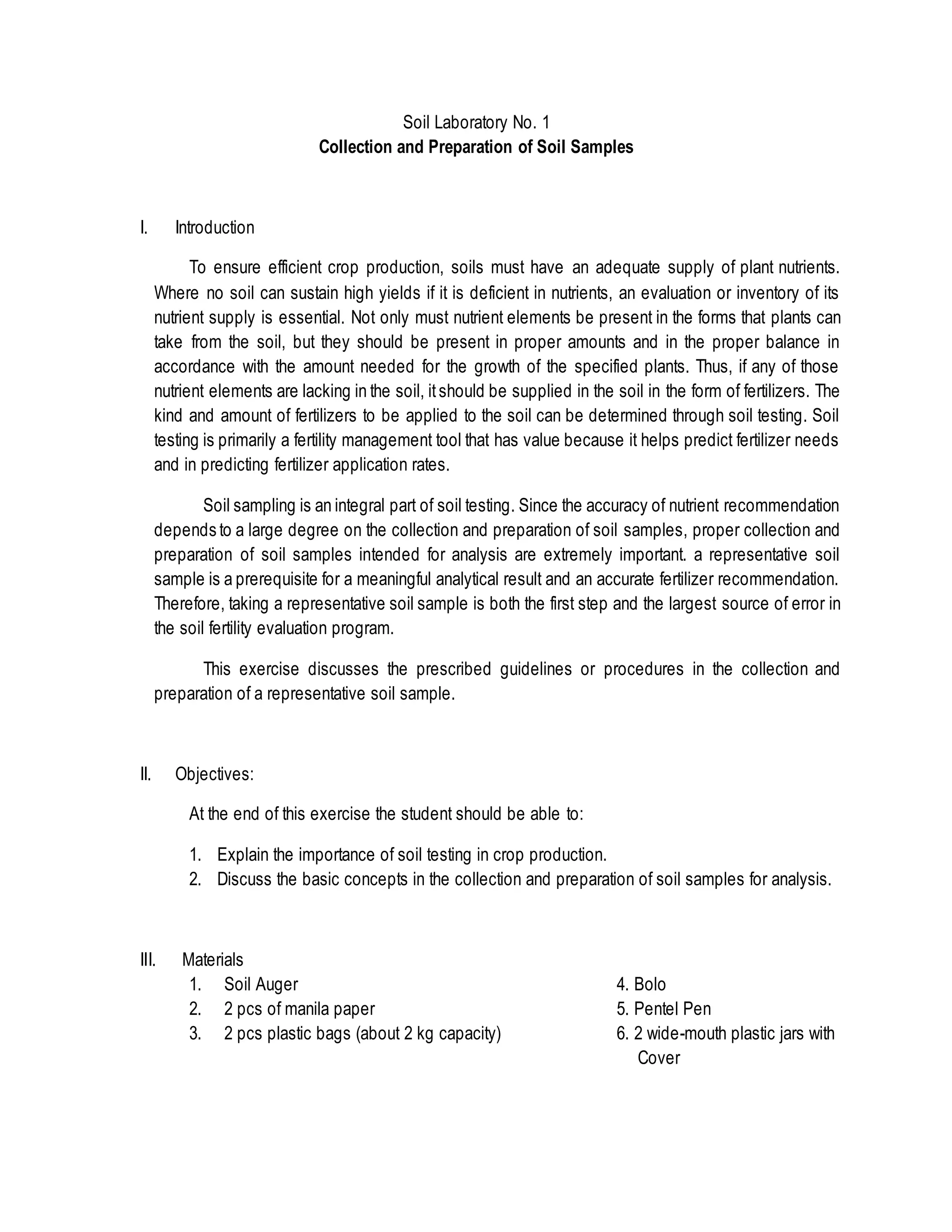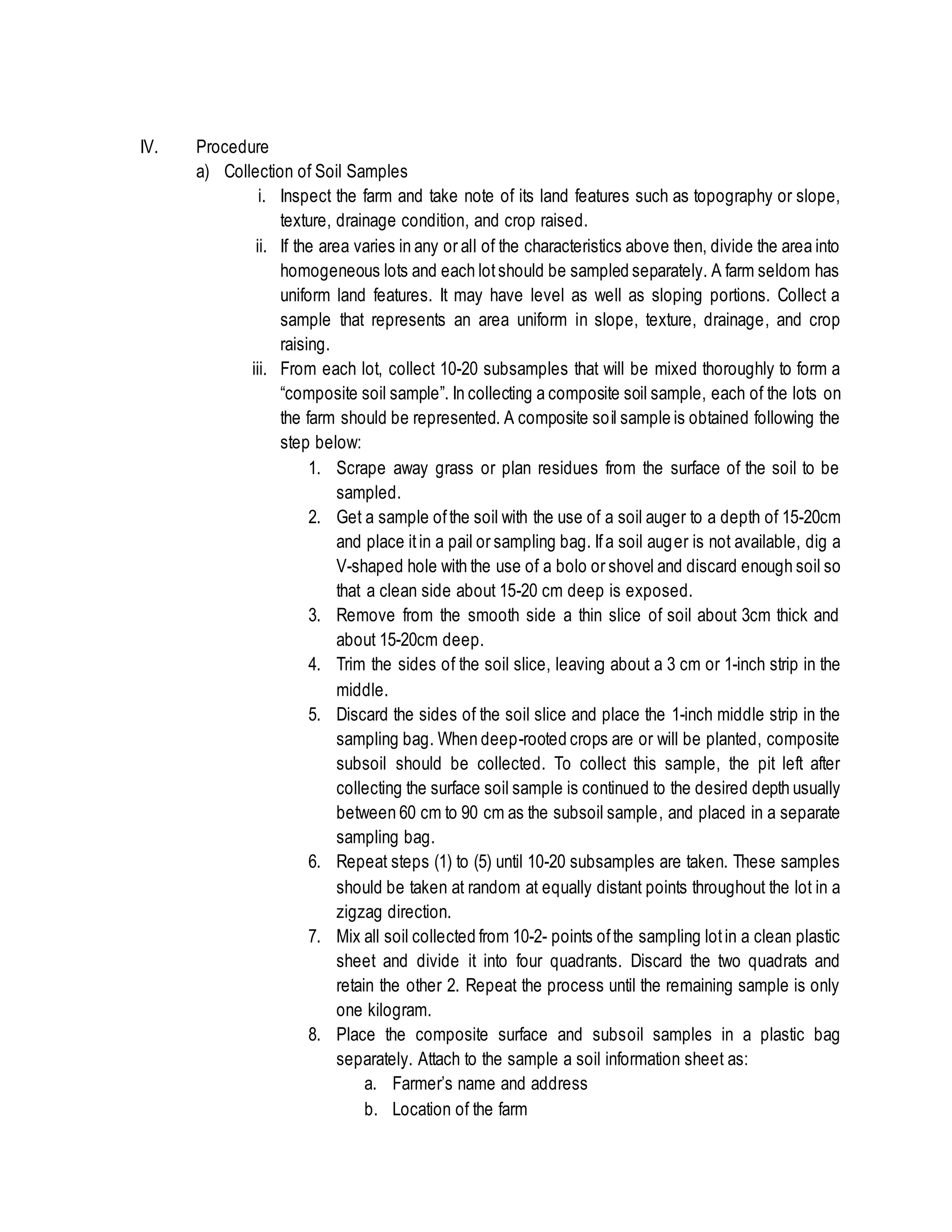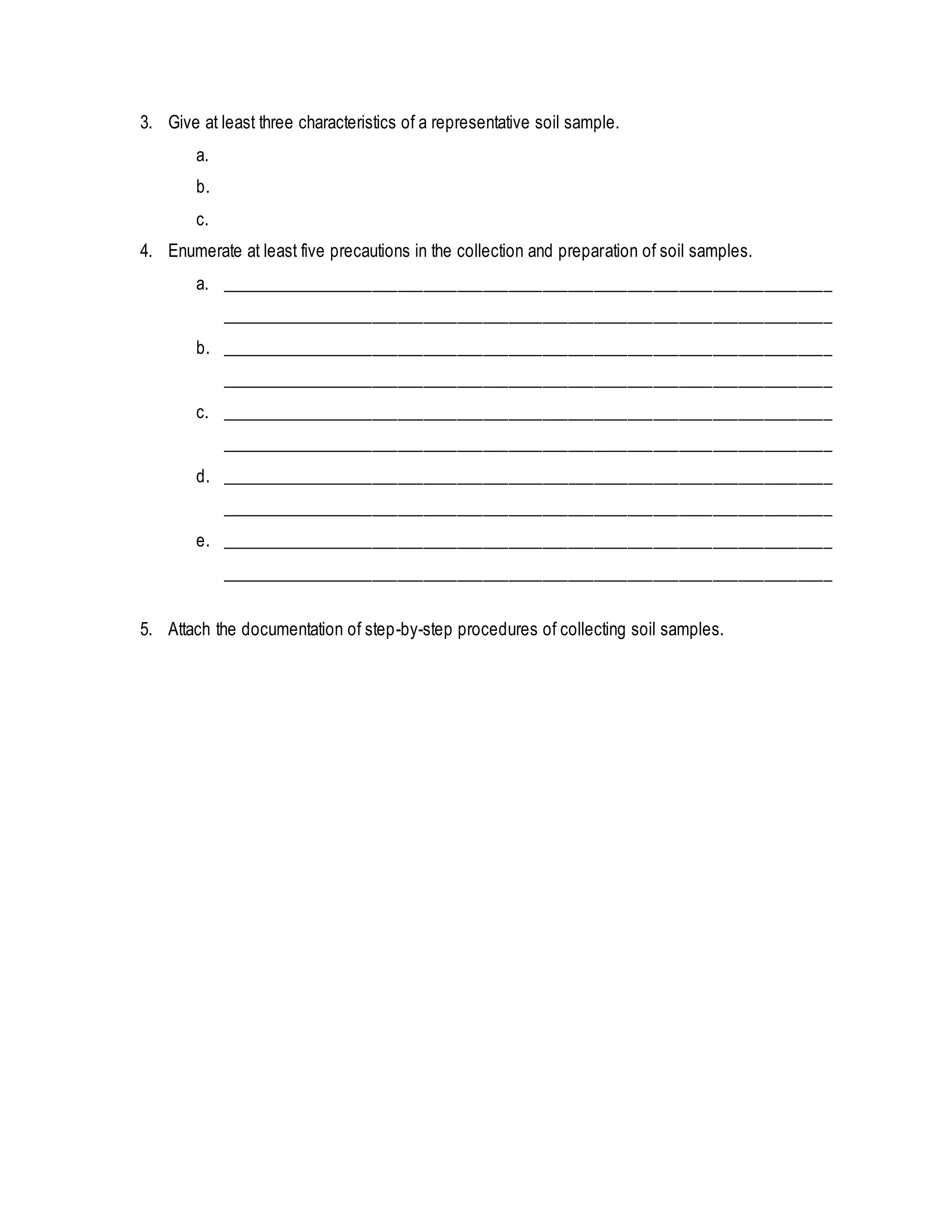1. Proper collection and preparation of soil samples is extremely important for meaningful soil test results and accurate fertilizer recommendations. A representative soil sample is obtained by collecting 10-20 subsamples from different areas of a field and mixing them together.
2. Soil samples should be air dried, crushed, and sieved to 2mm before storing and analyzing to determine fertilizer needs and application rates through soil testing.
3. Many factors including slope, texture, drainage, and crop history must be considered when delineating sampling areas and collecting subsamples to ensure a representative composite sample.




